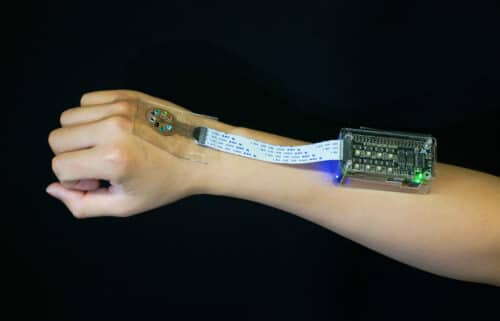A team of engineers and doctors at the University of Minnesota Twin Cities invented a unique 3D-printed light-sensitive medical device to detect the progression of Lupus and other light-sensitive diseases

McAlpine’s research team worked with Pearson and introduced a unique fully 3D-printed device with a flexible UV-visible light detector that can be positioned on the skin. This device enables to the diagnosis of the progression of Lupus and other light-sensitive diseases, as this disease worsens when exposed to sunlight or even indoor artificial light. “This research builds on our previous work, in which we developed a fully 3D-printed light-emitting device, but this time instead of emitting light, it receives light,” said McAlpine, co-author of the study and the Courier Family Professor of the Department of mechanical engineering. “To measure it, the light is converted into electrical signals, which can then be correlated with the worsening of the patient’s symptoms.”
The 3D-printed device is developed with several layers of materials printed on a biocompatible silicon base. The layers consist of electrodes and optical fibers. Filters can be altered as per the wavelength of light to be evaluated. The research team used zinc oxide to collect UV light and convert it into electrical signals The device is configured with a dedicated portable console for continuous monitoring and correlation of lightning to symptoms. “We know these devices work in the lab, but our next step is to put them in the hands of patients to see how they work in real life,” Pearson said. “We can give them to participants and track what light they’ve been exposed to and determine how we can predict symptoms. We’ll also continue testing in the lab to improve the device.”
McAlpine and Pearson mentioned that the 3D printing process is relatively inexpensive and in the future will provide easy and quick access to a device without the expensive manufacturing process of conventional devices. “At the moment, there is no other device like it with this potential for personalization and this easy to manufacture,” Pearson said. “I dream of having one of these 3D printers right in my office. I could see the patient and judge what wavelength of light we want to judge. Then I could just print it out for the patient and give it to them. be 100 percent personalized to their needs. This is where the future of medicine is going.”
Click for the Published Research Paper and Video






